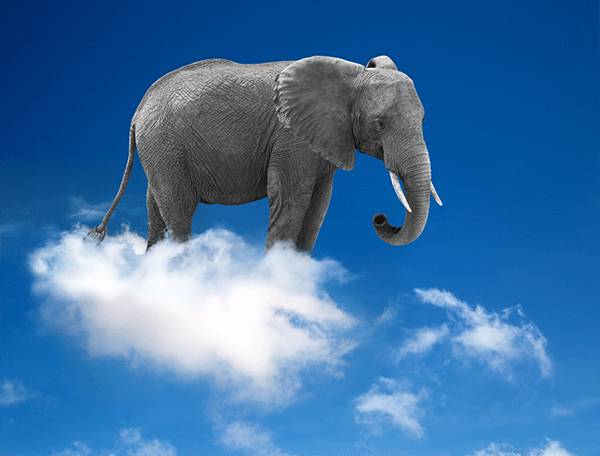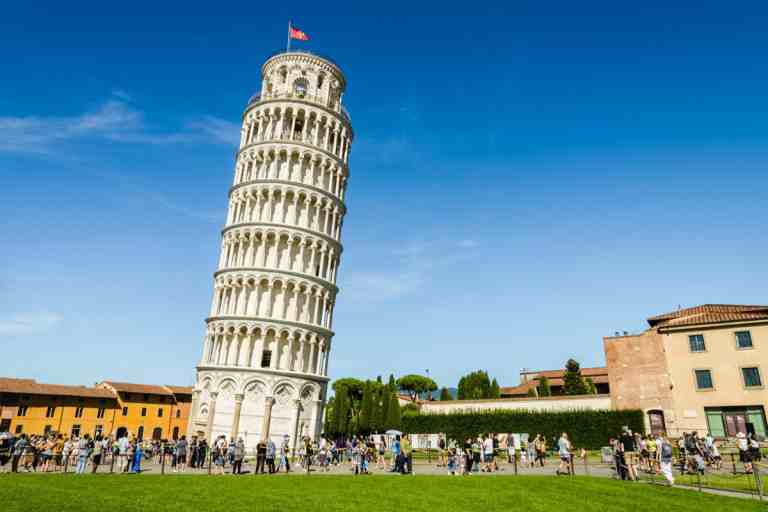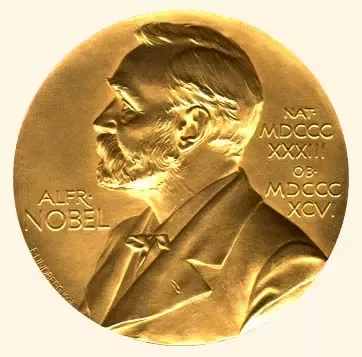Topics in Physics
Derived Units: Similarities and differences with fundamental units Gravity: Facts on Gravity Relative Density of Substances and Specific Gravity Types of Heat Transfer: Conduction Types of Heat Transfer: Convection Types of Heat Transfer: Radiation Physics Scheme of Work, SS1, First Term Physics Scheme of Work, SS1, Second Term Physics Scheme of Work, SS1, Third Term Velocity and Acceleration Newton's Laws of Motion Importance of Gravity What is Density? Density of various substances Concepts of Force and Motion in Physics Motion and Speed in Physics Concept of Heat Transfer Concepts of Heat and Temperature Gravity on the solar system Zeroth Law of Thermodynamics: Thermal Equilibrium Fundamental Quantities and Units in PhysicsAcademic Questions in Physics
Which of the following is a fundamental quantity?
A. Luminous Intensity
B. Area
C. Volume
D. Velocity
E. Concentration
F. Acceleration
An object at rest will temporarily stay in its state of rest, and if the object is in uniform motion, it will temporarily move in a straight line, unless an external force acts upon it.
The above statement refers to Sir Isaac Newton's first law of motion.
A. True
B. False
Which of the following statement is incorrect concerning gravity?
A. The force of gravity is generally considered the strongest force among the four forces that govern the universe
B. Your weight changes as you travel away from the earth
C. If we dig the earth until we get into its center, we will have no weight as a result of lack of gravity
D. Gravity prevents us from falling off the constantly rotating earth
E. If a hammer and a feather are dropped simultaneously in a vacuum, they will both land at the exact same time as a result of gravity
F. Weight is always a function of gravity

Sir Isaac Newton was hit by an apple when he pondered on force, motion and gravity.
A. True
B. False
The movement of gaseous particles through a tiny hole is termed _____.
A. Osmosis
B. Diffusion
C. Effusion
D. Infusion
E. Defusion
F. Gaslusion
A lighted bulb transfers heat through a process termed _____.
A. Conduction
B. Convection
C. Radiation
D. Oxidation
E. Reduction
F. Electrical Induction
A measurement of how much the velocity of an object changes with time is termed _____.
A. Displacement
B. Acceleration
C. Speed
D. Momentum
E. Velocity-Time graph
F. Average velocity
Which of the following differentiates velocity from speed?
A. Distance
B. Time
C. Momentum
D. Inertia
E. Direction
F. Distance and Time
Let me begin by stating that without gravity, there won't be any form of life on earth.
Recall that gravity is defined as a natural force that pulls (or attracts) a body towards the center of the earth or another physical body having a larger mass (than the body being pulled).
Please read on the concept of gravity here.
Having a good understanding on the concept of gravity will aid you to easily comprehend its importance. Understand that the importance of gravity may also be considered as functions or effects of gravity.
Below are the importance, functions or effects of gravity:
1. It holds the atmosphere close to earth.
The atmosphere contains oxygen which is utilized by living organisms for respiration. It also contains carbon(IV)oxide used by plant to manufacture food through a process termed photosynthesis.
Please read on photosynthesis here.
In addition, the atmosphere protects us from the sun's ultraviolet rays through its ozone layer and green house gases.
Please read on the functions of the atmosphere here.
2. The sun's gravity holds the earth in its orbit at a distance that will prevent its rays from harming all of earth's inhabitants.
The distance of the earth from the sun is 147.21 million kilometers.
Please read on the planets of the solar system and their characteristics here.
The above distance is neither too close to the sun (to prevent extreme sun rays from harming life on earth) nor too far from it (to prevent extreme cold on earth's biosphere).
3. Gravity is the reason why we have weights.
Without gravity, we would not be able to stand on earth. In fact, we will become weightless; and as a result, float in space.
You can read on the concept of mass versus weight here.
4. Without gravity, there won't be any form of movement on earth.
Means of transportation like cars, trains, ships and airplanes will not work since they will all end up floating in space.
Please read on the means and modes of transportation here.
5. The muscles of humans and animals will become wasted from a lack of gravity on earth.
This is so because movement and locomotion becomes impossible in humans and animals.
Please read on amazing facts in biology here.
6. Without gravity. The earth will have no natural satellite.
The moon is earth's natural satellite and it has got its own force of gravity.
It is the gravity on earth that keeps the moon in it's orbit around earth. This is the cause of ocean tides because the moon's gravity pulls the seas and oceans on earth towards itself.
Please read more on the solar system here.
7. Scientists are of the opinion that gravity is responsible for the formation of new planets and stars in the solar system.
Gravity is able to achieve this by pulling together the materials that forms them.
Please read on types of planets and their characteristics here.
8. The powerful effect of gravity is seen in the formation of black hole.
Think of a black hole as a region (or hole) in space formed by the strong pull of gravitational force to an extent that even light unable to escape through the hole or region.
A black hole attracts so much mass into a small volume (hole) through the powerful effects of gravity such that nothing can pass through the hole (including light). For this reason, it becomes the darkest thing in the universe.
You can read on the concept of matter here.
Kindly share this article via the links below:

Please click here to contact Alfred if you require any of the following services:
If you need a standard website at an affordable price.
Online training on the academic subjects: biology, chemistry and basic science.
If you require an advanced smart school management system (web application) for your school.
Click here to read on Len Academy Smart School Software.
Please click here to follow Len Academy on Google News.
Amazing facts in Physics
Marie Curie was the first person ever to win two Nobel prizes. She won her first Nobel price for physics in 1903, and the second for chemistry in 1911 for her work on radioactivity.
The hottest temperature ever recorded occurred in Furnace Creek Ranch, Death Valley, California, USA, at 56.7oC or (134oF) on July 10, 1913

A medium-sized cumulus cloud has a weight of about 80 adult elephants.
You can think of cumulus cloud as a detached, individual, cauliflower-shaped cloud often seen in fair weather conditions

The reason the Leaning Tower of Pisa is tilted is the same reason it's still standing
One quarter of an apple is filled with air and that's why they float in water

The Nobel price was named after its founder, Alfred Noble. He is a Swedish, born on October 21, 1833; and was the inventor of dynamite. He was also a a famous scientist and a successful business man.

Glass balls bounce higher than rubber balls
Every planet has its own unique gravitational force. For instance, Mars has a gravity of 3.711 m/s2 while earth’s gravitational force is 9.807m/s2.
When two metals are put together in space, they will stick together as if they are welded. This phenomenon is called cold welding
The fastest animal on land is cheetah. It can reach a maximum speed of about 113km per hour.
Notable points in Physics
The Standard International (SI) unit for density is kilogram per cubic metre (Kg/m3).
The table below shows various substances with their densities:
|
Substance |
Density (Kg/m3) |
|
Helium |
0.179 |
|
Air (1atm and 20oC) |
1.20 |
|
Bamboo Wood |
400 |
|
Ethanol |
810 |
|
Methylated Spirit |
800 |
|
Benzene |
900 |
|
Paraffin Wax |
900 |
|
Ice |
920 |
|
Water (Fresh Water) |
1000 |
Force can be balanced or unbalanced.
When forces from different directions act on an object and consequently bring about the object's motion, then such forces are unbalanced.
Conversely, if theses forces bring about zero motion (static position or no movement) on the object of reference, then it's a balanced force.
In summary,
An apple hanging on a tree (without any form of movement) has a balanced force.
An apple falling from a tree has an unbalanced force.
If one covers a distance of 10,000 meters in 50 seconds and another covers the same distance in 5,000 seconds, we can conclude that the first person has a greater speed because he covered the same distance at a lesser time.
Speed is defined as distance travelled per unit of time. It can also be defined as the rate of change of distance.
Speed = distance/Time
Speed is a scalar quantity since it has only magnitude. Speed does not have a direction.
In physics, motion is defined as a change in the position of an object with reference to time.
Although we sometimes sit or stand in a fixed position, that doesn’t mean motion isn’t taking place. The fact that the earth is constantly rotating implies that we are indirectly moving along with it. We can thus say that motion can be relative to some frame of reference.
In the above paragraph, the earth (constantly rotating along its axis) is our frame of reference and everything present on earth is in motion (with regard to earth as a frame of reference).
Heat is a form of energy. It cannot be lost according to the first law of Thermodynamics; rather it will be transferred. The first and second laws of thermodynamics are stated below:
Energy can neither be created nor destroyed but can be transformed or converted from one form to another.
1st law of thermodynamics
In the course of energy transfer, some energy is lost in the form of heat to the surroundings.
2nd law of Thermodynamics